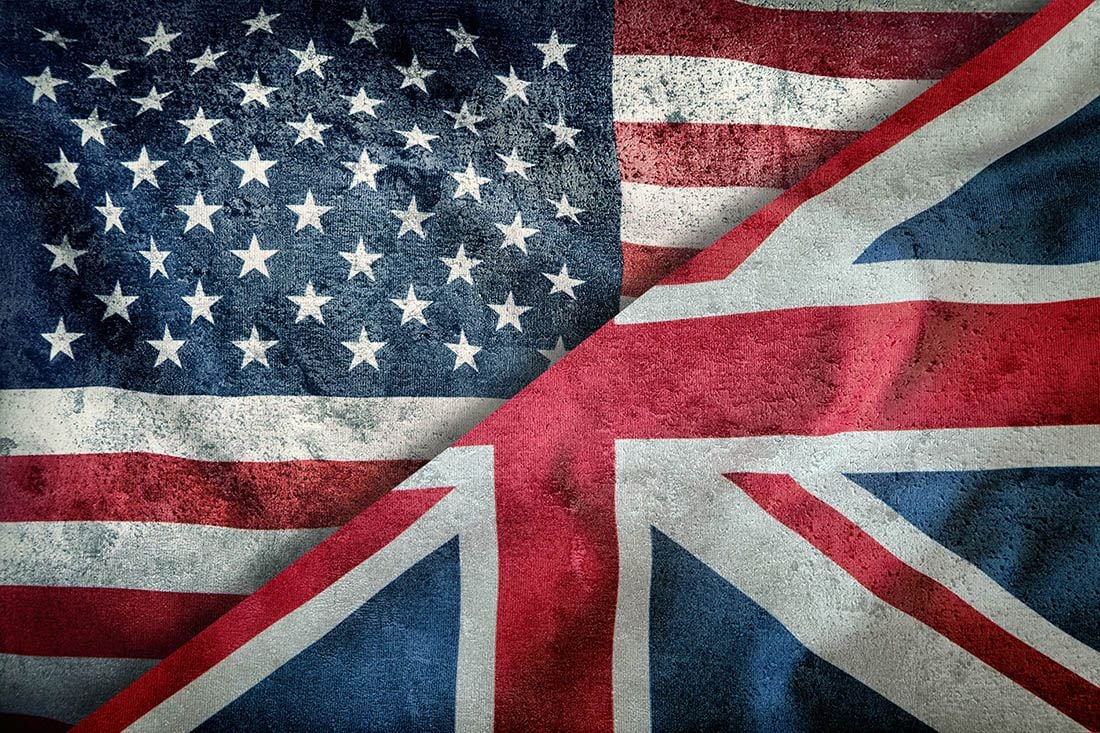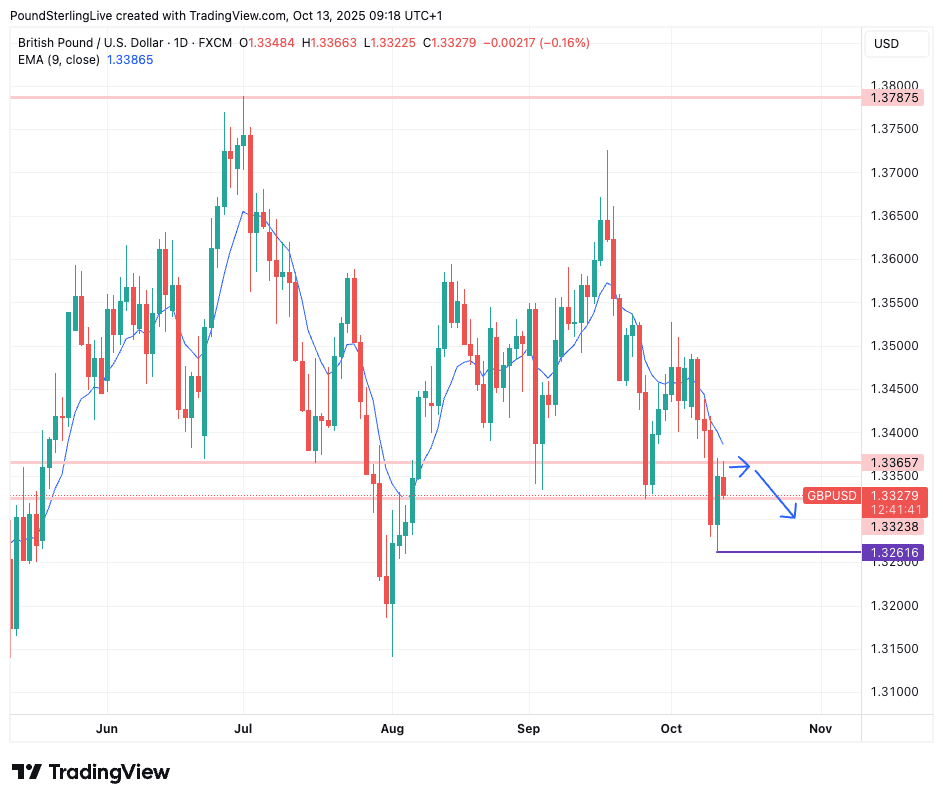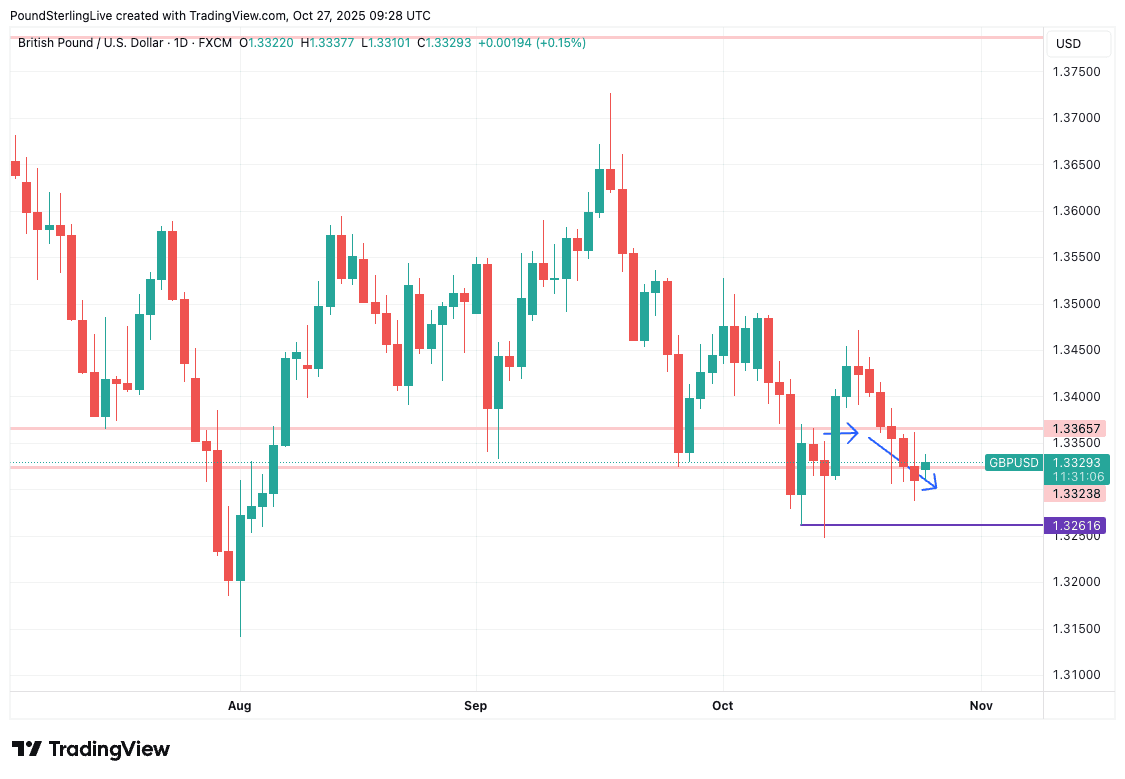
Image © Adobe Images
The British pound is set to remain under pressure against the dollar in the coming days.
We've just seen six consecutive daily declines for the pound to dollar exchange rate (GBP/USD) and we hold a bias for further weakness in the coming days.
Sure, there is scope for a little relief rally early in the week, but we are sticking with a view that periods of strength are liable to be limited in scope and duration.
This is a view we've held for some weeks now:
The chart below shows the overlay for our weekly forecast made two weeks back on October 13, when we looked for a slight bounce and then a retreat lower:
The new and updated chart shows that the sentiment of the forecast was broadly correct, i.e. a near-term recovery and consolidation would be shallow ahead of a more meaningful shift lower.
To be sure, the recovery was more pronounced than expected, but the sentiment was broadly correct, as shown by the latest daily chart:
We look for this pattern to remain intact and play out further, meaning any early-week recovery is liable to falter and a test of 1.3247 remains the ultimate near-term objective.
Those wanting a stronger pound can still hope for a more meaningful recovery, as the consensus of investment bank forecasts shows the pair will end the year higher than current levels. (The consensus forecast targets for the next 12 months are available here.)
This is because economists are still of the view that further USD weakness is likely over a multi-month timeframe as the Federal Reserve lowers interest rates further and that short-term strength will utlimately give way.
With the Federal Reserve in mind, what happens to GBP/USD this week could depend on Wednesday's policy decision in Washington, where a 25 basis point rate cut is due.
The cut is well anticipated, meaning U.S. dollar direction will be determined by the guidance regarding further cuts.
If the Fed indicates further cuts are to be expected as it remains concerned about the labour market, expect the dollar to weaken. However, a lack of official U.S. data makes such a strident call risky and the Fed will likely strike a cautious tone.
"Chair Jerome Powell is likely to describe the rate reduction as a risk management measure, without indicating any bias towards the December meeting," says Paolo Zanghieri, Senior Economist at Generali Investments.
If so, then any USD weakness should be faded and the current phase of USD resilience can continue a little longer, pushing GBP/USD lower further still.
However, strategists at CIBC Capital Markets take a more constructive view and think GBP/USD should be relatively buoyant. They think a move to "strong support" at 1.3249 is "well out of reach."
"Indeed we would favour a test towards 1.3390/95. We are also mindful of the prospect of a graduated paring in November rate cut expectations which should support GBP/ USD," says CIBC strategist Noah Buffam.


